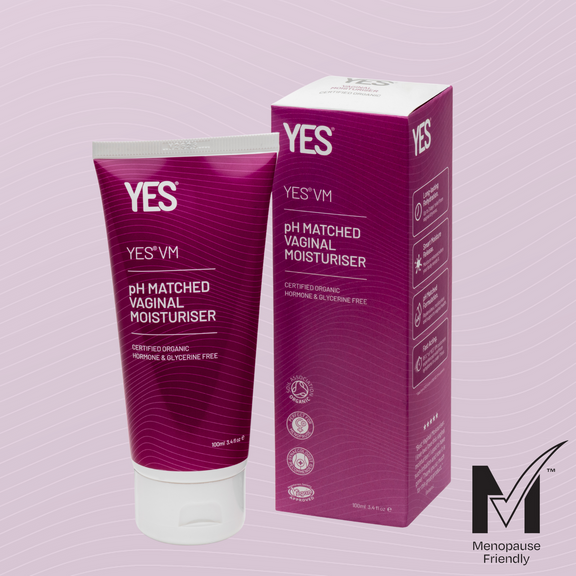Know Your Body: Vulva vs Vagina – Why Getting It Right Matters
Accurately identifying and labelling our body parts is important, especially when it comes to our genitals. Not only is it important for our physical health, but it is also vital for our sexual well-being. The more confidently that we can discuss our bodies, the easier it is to describe something accurately to a doctor or communicate what we desire to a partner.
We recognise that language is complex, and as such, we may have all grown up with or adopted different words to describe our genitals – fanny, muff, lady bits, foof, pussy, lady garden, the list goes on… It can be pretty empowering to use your own vocabulary, provided that you are able to use and understand the correct medical terminology too. However, when it comes to the biologically female anatomy, there are still common misconceptions. The most common – the word 'vagina'.
Vulva vs Vagina
The word vagina is regularly misused to refer to the female genitalia when in fact, it's only a small part of it. 'Vulva' is actually the correct term to use to describe all of the external sex organs. The vulva includes the pubic mound, labia majora and minora, clitoris, urethra, and vagina. Whereas the vagina is a muscular canal that runs from the cervix (the opening of the womb) to the vaginal opening.

The Vulval Anatomy
Vulva
The vulva includes all of the external genitalia, including the labia majora, labia minora, glans clitoris and urethra.
Labia (Inner and outer)
The labia majora are the outer lips, forming the lateral boundaries of the vulva. The labia minora are the inner lips. They lie inside the labia majora and are thinner. When aroused, they fill with blood, which causes them to turn a darker colour. The length of the labia minora varies from barely visible to around 10cm – everyone's is different!
Clitoral hood
At the top of the vulva, the labia minora meet to form the clitoral hood. This covers the external part of the clitoris. The size varies from person to person.
Clitoris
Did you know that the clitoris is the only organ in the human body with the sole purpose of creating pleasure? The tip of the clitoris often shows externally, and it enlarges as the body is aroused (essentially an erection!) The external part that we see is commonly mistaken as the entire clitoris, when in fact it extends into the body, forming two bulbs that sit either side of the vagina. It is around 10cm when not aroused and increases in size with arousal. The clitoris contains about 8,000 nerve endings – twice as many as the penis! (1)
Urethra
This is the tube that connects the urinary bladder to the urinary meatus to remove urine from the body. This exists in both males and females.
Vagina
The vagina is the muscular part of the female genital tract, which extends from the cervix (the opening of the womb) to the vaginal opening. According to The Vagina Museum, the term vagina is from the Latin meaning 'sheath' or 'scabbard' (2). It is where babies exit through birth and where your menstrual blood exits during your period. Plus, it is used for insertion, i.e., with a penis, fingers, sex toys, tampons, or menstrual cups (3).
What’s normal?
It can be hard to know what a normal vulva looks like. Your vulva, just like your breasts, boasts its own unique size, shape, and colour. How a vulva looks varies from person to person! Many women worry that their labia (or genital ‘lips’) are too long or uneven. But again, just like breasts, the length of our labia can vary and isn’t always symmetrical. Curious to know more? Check out our blog, ‘Normal’ Vaginas Don’t Exist – and we love it!’
Normalising the conversation
One of the ways we can normalise language around intimate health is through education. How we talk to our children about intimate health and our bodies is important so that the conversation is normalised from the early years. The Eve Appeal has a great resource called 'Educating Eve Part 1' with tips on talking to your child about their body. Equally, while sex education and anatomical knowledge are often passed down from parents to children, sometimes a child may grow up and hear important health information that they want to pass on to a parent. As most women diagnosed with a gynaecological condition are 'older', often menopausal, it's essential to educate women of all ages about their gynae health, perhaps even helping them become more comfortable talking about genitalia when they may not have been previously. The Eve Appeal's 'Educating Eve Part 2' provides some great tips on approaching conversations around gynae health with a parent, grandparent, friend, or colleague, which you can find here.

Resources
There are some fantastic sex education resources out there to help you familiarise yourself with your body, correct terminology, and learn more about intimate health. We recommend:
- Download the free YES® Guide: Understanding and treating vaginal dryness
- 'Mind The Gap: The truth about desire and how to futureproof your sex life' by Karen Gurney
- 'Sex Ed, A Guide For Adults' by Ruby Rare
- 'My Menopausal Vagina' by Jane Lewis.
- 'What is a Vulva Anyway?' booklet by Brook
- Vulva anatomy worksheet by The Vagina Museum





